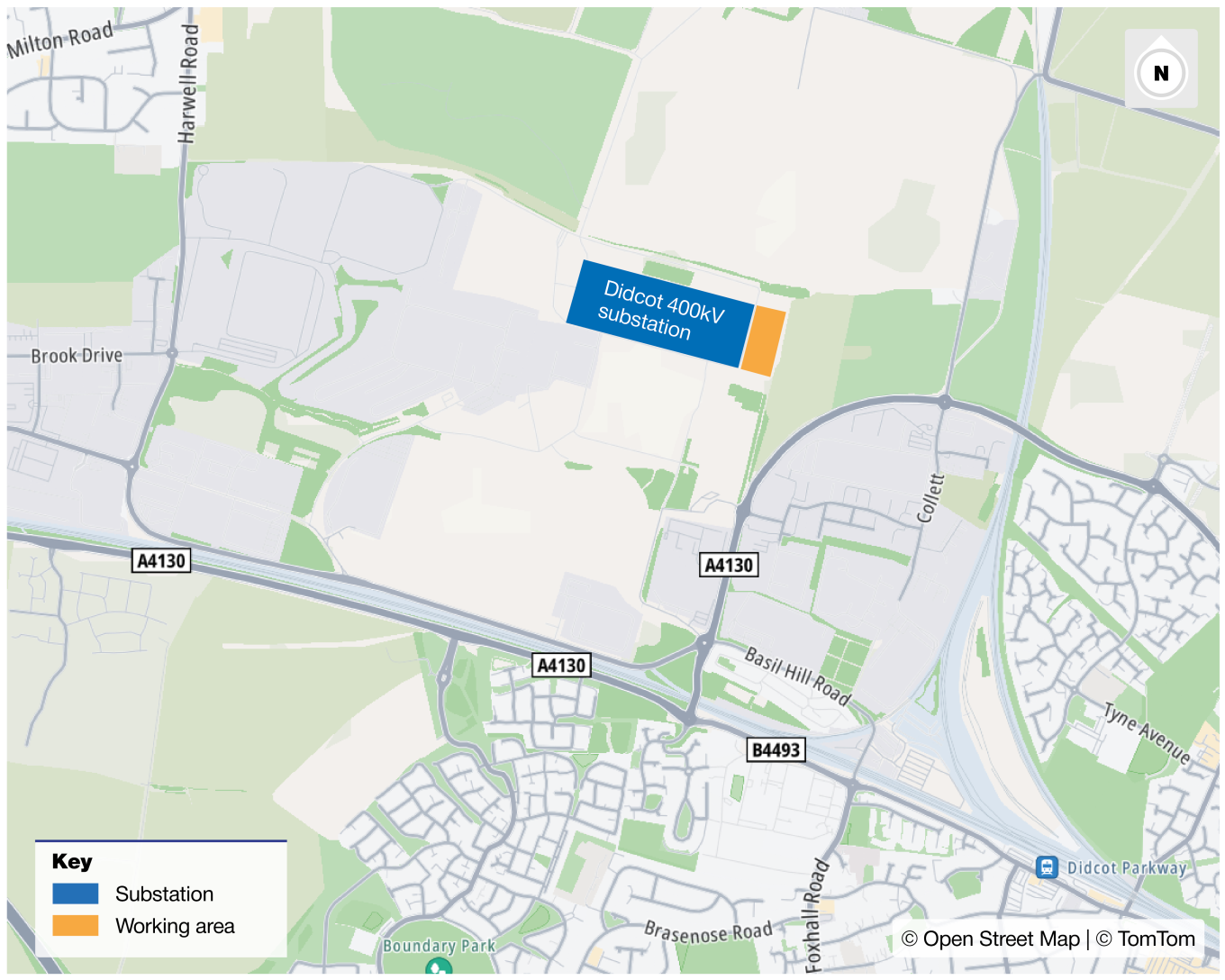We’re extending our existing Didcot substation to improve the grid resilience and facilitate new connection requests to our network.
Project Overview
We are carrying out works to extend the existing 400kV Didcot substation which will include the installation of three new transformers and a new 132kV GIS substation on the site. These additions will help meet growing demand for flexible, zero carbon power in the region and help to power Oxfordshire’s digital future.
We are supporting the energy transition to clean power and enabling the grid to meet the region’s energy needs for years to come.
The 400kV substation supports the transmission of high voltage electricity to where it’s needed in the UK
The 132kV gas-insulated switchgear (GIS) facility is being built to connect data centres and battery storage systems to the grid
The network has seen an increase in demand for energy from data centres and battery energy storage systems (BESS). Providing battery connections helps to boost grid flexibility and data centres help to support the regional and national economy, powering the UK’s digital ambitions.
There will be no disruption to the supply of electricity in Didcot during these works.
The working area is highlighted on the map below and will form the location of the new extended substation.

What you can expect to see
Works begun in 2025, and the team are expected to be on site until early 2029.
Our working hours will be:
- 8am to 6pm Monday to Friday
The work will be carried out by our Principal contractor, Linxon, on behalf of National Grid.
We don’t anticipate our work causing any major disruption, but you may hear some noise while we are working or notice some construction vehicles in your local area. We are carrying out this work under National Grid's permitted development rights and will ensure our works comply with environmental licensing requirements.
Frequently Asked Questions
Here you’ll find answers to some of the most frequently asked questions about the Didcot substation project.
Substations are integral features of the transmission and distribution networks enabling electricity to be transmitted at different voltages, securely and reliably. One of the main roles of substations is to convert electricity into different voltages. This is needed so electricity can be transmitted throughout the country and then distributed into our homes, businesses, and buildings.
The additional connections are needed to connect new customers to our transmission network to meet an increase in electricity demand to the west of London. As a regulated business, we have a legal obligation to connect customers to our network when a connection is requested.
The substation extension will facilitate a range of technologies including data centres and battery energy storage systems (BESS). The data centres are buildings dedicated to housing computers and digital storage.
Construction vehicles, including HGVs will bring people and materials to and from site. Although you may notice these construction vehicles in your local area, we are not planning to work on any other roads in the area. Heavy good vehicle (HGV) transport routes are agreed in advance and are carefully monitored to ensure contractors are correctly following them. They are focused on the strategic road network, not smaller local roads.
There will be no disruption to the supply of electricity during these works.
As well as meeting the needs of our local customers, the extended substation is a key part of National Grid’s nation-wide expansion of the grid network to meet the power demands of the future.
Under National Grid’s community benefit programme, communities hosting new electricity transmission infrastructure are entitled to apply for funding from National Grid. To ensure that our community benefit programme effectively serves your area, we are eager to hear local views and will soon be undertaking an engagement exercise to understand what matters most to the community and identify where community benefit funds can provide lasting advantages, including through community grant schemes, investments in community groups, or regional partnerships.
Get in touch
If you have any questions about the project, please get in touch with our Community Relations team via:
Email: [email protected]
Phone: 0800 593 0530